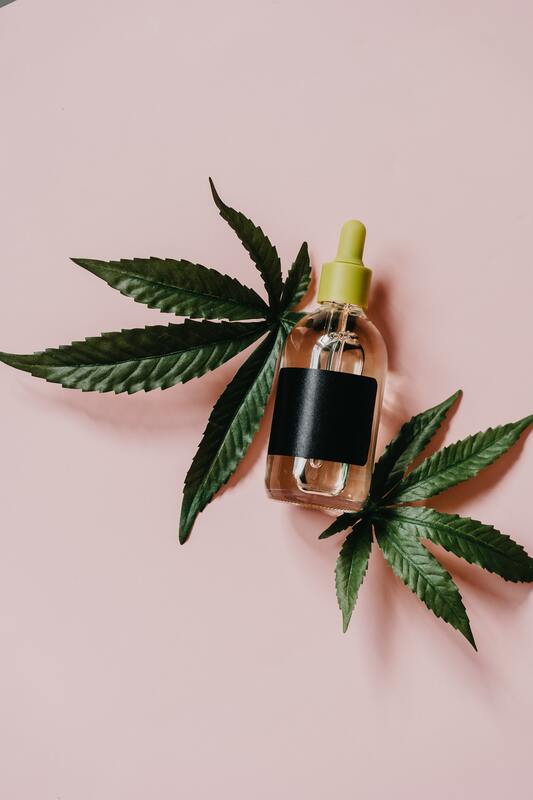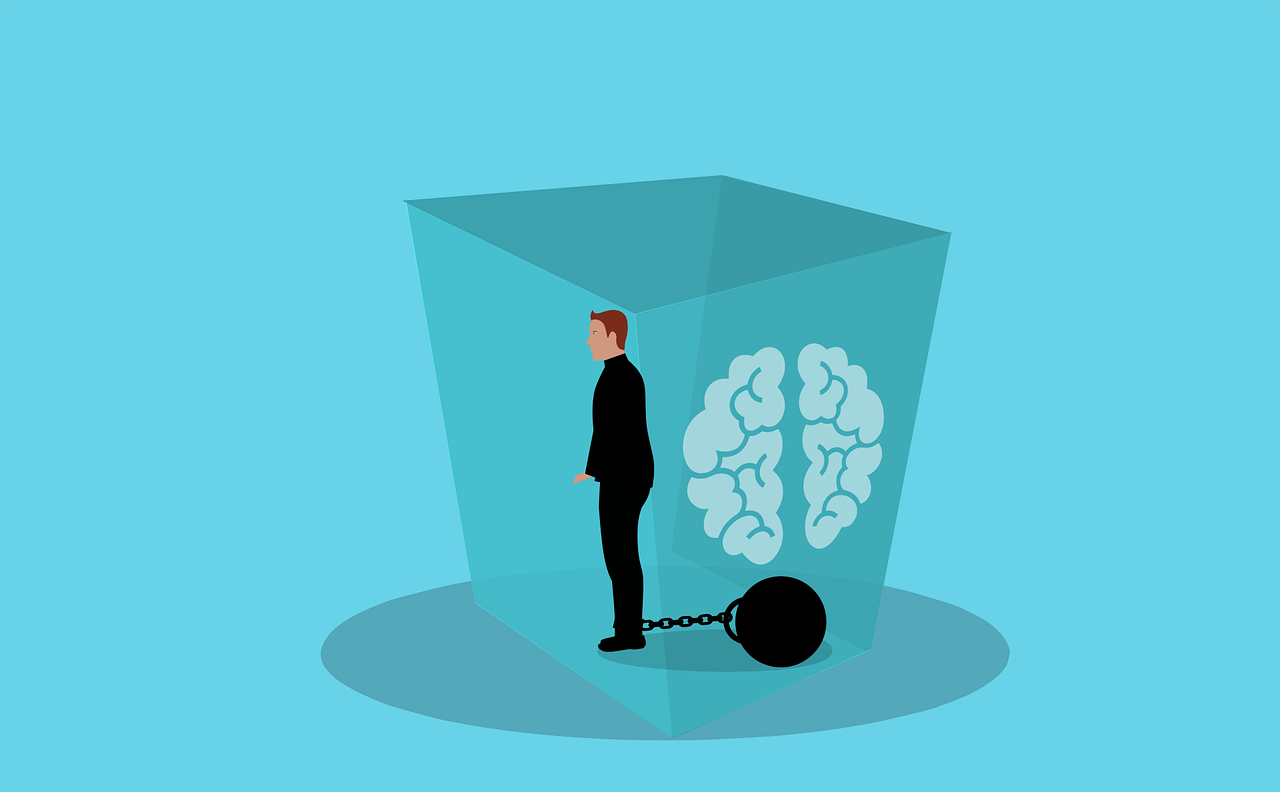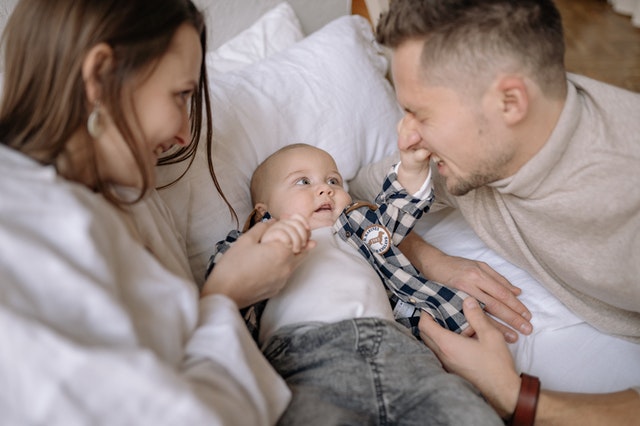The Public Health section is dedicated to providing information on the political and social aspects of healthcare and medicine. The best part? Everything is simple, concise, and easy-to-read!
Preventing Coronary Artery Disease in Young Adults
Luiza Pieroni Lopes Ambrosio, March 31 2024
Coronary Artery Disease (CAD) is a condition characterized by the narrowing or blockage of coronary arteries due to plaque buildup, leading to reduced blood flow to the heart. This can result in chest pain, heart attacks, and even death. Early identification and interventions are crucial because they can significantly reduce the progression of the disease, prevent serious complications, and improve quality of life. Focusing on young adults is essential because traditional risk models often underpredict their CAD risk due to the dominant weight given to age, making many young individuals ineligible for preventive therapies despite potential underlying risks.
The Impact of Education on FertilityAutumn Jackson, March 31 2024
In the last 20 years, there has been concern about the decrease in fertility, or the amount of children being born, around the world. It is well-known that the Total Fertility Rate (TFR), or the number of children per woman, has decreased to below two children in many developed countries like Japan and Korea. One possible reason for this decrease in fertility could be the rise in female education, which is explored in a recent article by Jungho Kim. The author wanted to confirm whether an increase in female education is indeed correlated with decreased fertility rates.
Vertical Divider
|
Antibiotics: The Catalyst of a New EpidemicKayla Ramos, March 31 2024
Antibiotics are often prescribed by medical professionals or can be bought as over-the-counter medicine. In many cases, people automatically resort to taking an antibiotic due to illnesses. However, the overuse of antibiotics leads to a larger problem known as antimicrobial resistance (AMR). Antimicrobial resistance is when the bacteria that the antibiotic is designed to eliminate builds up a resistance to it—making the antibiotic ineffective. AMR has become an increasingly growing and prevalent problem throughout the years.
|
Hidden Impacts of the COVID-19 Pandemic on Older AdultsDerick Ngo, March 31 2024
The COVID-19 pandemic brought a host of lasting changes to society and the daily lives of individuals. Immunocompromised individuals and others at high risk of severe COVID complications found themselves stuck at home. Older adults were hit especially hard by these changes and restrictions. Daily life for many older adults became devoid of social interaction and stimulating activities, adversely affecting their quality of life and contributing to an overall decline on several fronts.
Vertical Divider
|
New Hope for Early Detection of Alzheimer's DiseaseDavid Cho, March 31 2024
Advancements in the early detection of Alzheimer's disease, a common cause of dementia, promise a proactive era in healthcare, yet ensuring equitable access to these breakthroughs is critical. New technologies, ranging from immuno-infrared sensors to tau Positron Emission Tomography (PET) scans, can revolutionize Alzheimer's diagnosis by allowing treatment before symptoms start. The potential benefits are wide-reaching; for example, timely initiation of care could significantly impact disease progression.
|
Understanding Anxiety: Unveiling Risk Factors and Seeking HelpLuiza Ambrosio, December 29 2023
A common mental health issue among college students is anxiety, which is a complex problem caused by many different variables. Research understanding these risk factors is essential to developing supportive environments and creating interventions that work. Furthermore, adopting innovative approaches—especially digital interventions—holds promise for closing the accessibility gap and advancing psychological wellness.
Vertical Divider
|
Facial Mimicry as a Method to Diagnose DepressionCrystal Hsueh, March 31 2024
Facial expression mimicry (FEM) is the act of “mirroring” the emotional facial expression of others when interacting with them. FEM is a common process that allows people to share and understand emotions, playing an important role in interpreting socio-emotional cues. There are two different types of FEM: spontaneous and voluntary. Spontaneous facial expression mimicry (SFEM) is unconscious facial expression mirroring, whereas voluntary facial expression mimicry (VFEM) is the conscious mirroring of other’s facial expressions.
|
Influenza Wreaks Havoc: Pregnancy Complications and Influenza ACatherine Lirtsman, December 29 2023
As the annual flu season is underway, it is important to acknowledge the severity of influenza (flu) viruses. Viruses infect, or hijack, cells and use them to produce even more viruses. The body then reacts to try to clear out the hijackers. The flu is primarily transmitted through respiratory droplets produced when an infected person talks, coughs, or sneezes. Influenza symptoms include fever, body aches, chills, headache, nausea, vomiting, dry cough, runny nose, and sore throat. The flu infects millions of people each year. However, some populations are even more susceptible to complications caused by the flu.
Vertical Divider
|
Understanding Brain Consciousness During CPRAnnie Liang, December 29 2023
Cardiopulmonary resuscitation (CPR) refers to the emergency lifesaving procedure done in order to sustain an unconscious patient that does not have a heartbeat and is not breathing. For patients who suffer from cardiac arrest and require immediate CPR, researchers sought to better understand the brain activity of these patients who were extremely close to death. New research from the NYU Grossman School of Medicine explored patient consciousness during CPR to better understand the mind.
|
Global Fertility Decline: Causes and EffectsAutumn Jackson, September 16 2023
Total Fertility Rate (TFR) is the average number of children born per woman. This measure can help measure rates of fertility across the globe. In particular, global TFR has declined significantly in the last century, and this has been causing far-reaching negative economic and medical problems. Thus, researchers have been paying attention to possible causes of this decrease in fertility. Robert John Aitken, a professor at the Priority Research Centre in Reproductive Science at the University of Newcastle, recently conducted an opinion piece that analyzed the global trend in TFR while putting together some of its possible environmental, educational, and lifestyle causes.
Vertical Divider
|
Can Using Birth Control Lower Your Colorectal Cancer Risk?Ayushi Banerjee, September 16 2023
Colorectal cancer is a type of cancer that targets your digestive tract, particularly your colon and rectum and it is the fourth most common type of cancer in both men and women in the U.S. Colorectal cancer screening in the United States is done once an individual reaches the age of 45 and since there are several screening tests that can be done, patients can choose which method is most appropriate for them. Using screening tests allows doctors to catch any signs of colorectal cancer because this type of cancer almost always develops from abnormal cell growth within the colon and/or rectum, making it easier to prevent cancer from developing in the first place.
|
The Impact of Age on Antidepressant ResponseCrystal Hsueh, September 16 2023
Depression is a common mental and mood disorder that frequently begins in adolescence and tends to persist into late adulthood. Between 1990 and 2007, the number of years lived with depressive disorders increased by more than a third and depressive disorders became the third most common cause of years lived with disability. Selective serotonin reuptake inhibitors (SSRIs) are the most common treatment for major depressive disorder (MDD), however, antidepressant response in adults approaches only 50%. Antidepressant response is associated with a decrease in depressive symptoms compared to the individual’s baseline depression.
Vertical Divider
|
Are Microplastics In Your Takeout Making You Sick?Emeline Wagner, September 16 2023
Microplastics are microscopic pieces of plastic that can fragment off larger plastic items through friction, heat, and other everyday occurrences. Microplastics are very common, with the average person being estimated to consume 39,000 to 52,000 particles per year. The full extent of the medical effects of microplastics are still being researched, however many of the chemicals used in plastic production are endocrine disruptors, which disrupt the hormones in the body and can lead to severe conditions like diabetes and heart disease. These particles can also accumulate in the bloodstream and organs such as the lungs. Another issue is genotoxicity, or the plastics causing mutations which could lead to cancer or autoimmune diseases.
|
Are Artificial Sweeteners Beneficial for Diabetics?Jasmin Kumar, September 16 2023
Artificial sweeteners are sugar substitutes that have a much sweeter taste than regular sugar. They are commonly used to reduce sugar intake and are popular substitutes for people with diabetes. Because these artificial sweeteners are so much sweeter than regular sugar, they are eaten in smaller amounts, decreasing the amount of sugar consumed. These substitutes are thought to decrease obesity and tooth cavities. Artificial sweeteners are used as sugar substitutes for people with diabetes mellitus, but are they actually that beneficial? Artificial sweeteners act in areas of the body that have receptor complexes, such as the mouth, intestine, colon, pancreas, and the brain.
Vertical Divider
|
The Role of Cannabis in the Fight against Ovarian CancerWayne Chiang, September 16 2023
Ovarian cancer is gynecological cancer that is mainly found in postmenopausal women. In many instances, there is a 6 month delay until the cancer is diagnosed; this leads to 70% of all cases being diagnosed only in the late stages of the cancer. Late-stage ovarian cancer usually cannot be cured, leading it to be the 5th leading cause of cancer-related deaths among women and the 7th most common cancer in the world. Treatment for this cancer includes surgery, chemotherapy, and specialized treatments that target the cancer cell processes. However, these treatments have not been very effective as 80% of patients have shown relapse for this disease.
|
International Stem Cell Tourism: What are the Effects?Autumn Jackson, April 2 2022
Stem cells are a type of cell in the human body that can develop into a more specific cell. For example, a stem cell can develop into a bone cell or heart cell depending on what the body tells it to do. Because of this ability, scientists have seen the potential of these cells in medicine since the 1980s. Now, there is stem cell research in multiple medical fields. One example is stem cell therapy, or regenerative medicine, in which stem cells can replace unhealthy cells in someone’s body. While stem cell treatments are relatively new, many patients have sought out stem cell therapy as an option for some illnesses.
Vertical Divider
|
How Psychological Stress Gets Under the Skin Crystal Hsueh, April 2 2023
Telomeres are structures made from DNA-protein complexes that are found at the ends of all chromosomes and are required for cell division. Telomeres shorten after each cell division and tell the cell when to stop replicating. Like the plastic caps at the end of shoelaces, telomeres protect the ends of chromosomes, making them serve as the body’s “molecular clocks.” However, due to a hypothesis known as the end-replication problem, telomeres progressively shorten over time with each cell division, which leads to genomic instability. Scientists have discovered through measuring the telomere length of people of different ages that telomeres become shorter with age.
|
Cancer Risk factorsNeel Sharma, April 2 2023
One of the most prevalent and lethal diseases throughout the world is cancer. Cancer is a disease characterized by the uncontrolled growth of cells, which result in the development of tumors. These tumors can disrupt normal bodily functions. As cancer research progresses, a greater understanding of the disease and new treatment options are quickly emerging. Despite these advancements, the best way to combat cancer is prevention. This is why conducting therapeutic research and studying epidemiology trends to identify common causes is extremely important. A recent study provided some beneficial insight through a close analysis of cancer incidence and related demographic trends in China.
Vertical Divider
|
Mosaico HIV Vaccine Trial Is Over—What Does That Mean?Juliette Williamson, April 2 2022
In 2019, Janssen Pharmaceuticals began the human immunodeficiency virus (HIV) vaccine trial known as Mosaico in an attempt to finally develop a more accessible and permanent solution to the public health crisis that plagues tens of millions across the globe. On January 18th of 2023, however, the project finally ended—without success. The experimental vaccine was found to be an ineffective form of treatment. HIV is a human immunodeficiency virus transmitted through sexual intercourse or the sharing of drug injection materials such as needles. When left untreated, it can lead to acquired immunodeficiency syndrome (AIDS) which is a chronic, often fatal, and lifelong medical condition.
|
Is Dementia-Friendliness as Friendly as We Think?Crystal Hsueh, December 28 2022
Dementia is a general term for the loss of cognitive thinking—such as memory, reasoning, and decision making—that progresses to interfere with the activities of daily living of the affected individual. Common diseases that cause dementia are Alzheimer’s Disease and Parkinson’s Disease. About 50 million people currently live with dementia, and this number is expected to triple within the next few decades as life expectancy increases. As of now, there is no cure, which is why dementia-friendliness has been recently emphasized by health professionals and local government officials. Dementia-friendliness is defined as the multitude of initiatives that are aimed toward supporting, benefiting, and understanding individuals with dementia. In a dementia friendly environment, people with dementia feel empowered to live in a way they want to and in a community that understands them.
Vertical Divider
|
It's Not Just DirtSami Ryan, December 28 2022
Soil is one of the most important resources on the planet, yet we walk on it every day without a second thought. The growth of food, the habitats of all life, and even the air we breathe owes its existence to soil. It is a complex system that plays an essential role in our lives, but it is treated as a dumping ground for waste. Soil provides plants with critical nutrients such as nitrogen, phosphorus, and potassium. We can get many of our nutrients from produce, such as nitrogen and phosphorus in beans and lentils and potassium in bananas. Many meats also have these nutrients, due to the food chain. The soil, therefore, has a ripple effect, meaning that if it is filled with detrimental substances, then we will be affected as well. The nuclear reaction in Chernobyl demonstrates this. The crops grown around Cheronbyl, such as wheat and barley, remained contaminated by radiation for many years after the leak as it cycled through the soil.
|
Has the COVID-19 Pandemic Led to a Less Healthy Diet?Jasmin Kumar, December 28 2022
During the COVID-19 pandemic, there have been noticeable changes in the diet of people all around the world. Specifically, there has been a shift towards eating more unhealthy foods that are high in sugars and fats, as well as drinks of similar nature. One study in particular focused on which specific groups of people had a significant change in their consumption of unhealthy foods during the pandemic. This relates to diseases that may occur later in life as a result of an unhealthy diet, which in turn, affects how likely someone is going to get COVID-19. Unhealthy items are described as being ultra-processed, defined as having many added sugars that increase the carbohydrate content. Usually this also includes preservatives, which are used to make food last longer. Less healthy beverages are labeled as sugar-sweetened beverages (SSBs). These can be drinks such as sodas, smoothies, or sports drinks like Gatorade or Powerade.
Vertical Divider
|
Monkeypox: Understanding the Disease and Tecovirimat as a TreatmentSabrina Ghalambor, December 28 2022
Monkeypox is a new viral disease facing the nation, and there are a lot of public misconceptions surrounding the disease. The virus is very similar to smallpox, and symptoms include rashes, fever, aches, and respiratory symptoms like coughing or a sore throat. Despite the fact that this disease is endemic, or native, in some countries, the recent outbreaks in Western nations have been closely associated with and generated stigma against men in the LGBTQ+ community, similar to the HIV/AIDS endemic in the 1980’s. Since the disease is primarily spread between biological men having sex with other biological men, this has been weaponized to stoke fears around the gay community. After the AIDS epidemic, scientists and policy makers worked together to find effective solutions and ensure that novel medications can be approved in emergency situations like this.
|
The Effect of Social Determinants of Health on Type Two DiabetesAllison Tolan, December 28 2022
Often in public health, socioeconomic status (SES) is utilized to assess an individual or community’s positionality and social standing regarding the type of resources and care that are made accessible. Those who have high SES tend to more easily obtain quality care or living in areas that allow them to live higher-quality lives. This notion is supported by what the Centers for Disease Control (CDC) defines as the social determinants of health, which contribute to the condition in which a person lives. These circumstances are impacted by a person’s environment and the amount of money, power, and resources accessible. Those considered to have low SES face health disparities that can impact their quality of life and well being. Health disparities may include limited access to quality health care, access to nutritious food, and exercise, which can impact the overall health of an individual.
Vertical Divider
|
Breast Cancer OverdiagnosisAutumn Jackson, December 28 2022
Cancer screening is a common method to detect cancer early. Patients, usually in their 40s to 70s, will either go once a year or every other year for a checkup, where an ultrasound or other technique will scan for cancer. Over the past decades, early cancer detection from screening has reduced cancer deaths significantly because patients are given treatment options that are effective and more affordable. Currently, the U.S. Preventive Services Task Force (USPSTF) has recommended regular screening for cervical, colorectal, breast, and lung cancer to be beneficial for certain groups of people. However, cancer screening also has negative side effects, as it is one of the possible causes of overdiagnosis. Overdiagnosis is when cancer screening detects a cancerous tumor that never would have caused issues in the patient’s lifetime.
|
Bariatric Surgery for Long-Term Weight Loss: Is It Right for Me?Menna Sun, September 26 2022
Obesity, or having excess body weight, is a very common health condition in the United States (US). Around 40% of the US population is obese, and the number is growing. Medically, obesity is defined as having a body mass index (BMI), or weight-to-height ratio, of 30 or higher. Obesity is considered a health problem not only because it can cause reduced mobility and other inconveniences, but also because severe obesity can shorten one’s lifespan by greatly increasing the risk of other diseases like heart disease, diabetes, and cancer. Given the health risks associated with obesity, weight loss is very important and can be achieved through a few options. One is to work with a dietitian or nutritionist to select and follow a healthy diet promoting weight loss.
Vertical Divider
|
Effect of Screen Use on Children's Mental Health During COVID-19Emeline Wagner, December 28 2022
During the Covid-19 pandemic, children had more time on their devices than ever. Lack of human interaction and increased use of technology could have lasting impacts on those who missed key developmental milestones during quarantine. Although the lingering effects of the pandemic cannot be fully explored, this time of extreme isolation allowed for important research on the effects of increased digital media consumption on the mental health of small children and adolescents. One Canadian study conducted from 2020 to 2021 might have uncovered some of the impacts of this higher usage. Collecting data from the parents of 532 children ages 6-18, scientists in Ontario confirmed that, on average, children exceeded their recommended one-to-two hours of screen time per day to alarming results.
|
Sunscreen and Potential Effects on Marine EnvironmentSubashni Rajiv, September 26 2022
Sunscreen is a beach bag staple for many people. It is considered an over-the-counter medication for the prevention of sunburn and skin cancer by the United States Food and Drug Administration (FDA). Spending extended periods of time in the sun without proper protection can result in a sunburn, a physical sign of acute sun damage that can often be painful. While symptoms of sunburn typically go away in a few days, long-term damage from sun exposure can result in skin cancer (an abnormal growth of skin cells), premature skin aging, and eye damage. A form of prevention, the regular application of sunscreen can reduce the risk of skin cancer. As active ingredients in sunscreens and other personal care products, UV filters are compounds that can block or absorb UV light.
Unfortunately, some commonly used UV filters in sunscreen, including oxybenzone and avobenzone, have the potential to transform into harmful byproducts. The increase in sunscreen use following growing concerns on the negative health effects of UV radiation, accompanied with the rise of marine and coastal tourism, has led to more sunscreen ingredients being found in marine ecosystems. Vertical Divider
|
Does Hazardous Alcohol Use Affect Intensive PTSD Treatment?Neel Sharma, September 26 2022
One of the most crucial parts of maintaining a healthy society is recognizing health trends among particular demographic groups within a population. One such case is the widespread incidence of post-traumatic stress disorder, or PTSD, among veterans. Given the intense experiences many soldiers face during their service in warzones and other areas across the world, veterans often find themselves struggling to acclimate back into civilian life upon returning back home. One common issue with PTSD in veterans is a concurrent diagnosis of alcohol use disorder, with 55–68% of veterans suffering from both PTSD and alcohol use disorder. The high incidence of hazardous alcohol use (HAU) in veterans with PTSD highlights the need to determine whether common PTSD treatments are still effective for veterans with HAU. Prior research in this field has revealed the effectiveness of cognitive processing therapy for PTSD, but it was unclear if HAU affects treatment outcomes. To answer this pressing question, researchers from Rush University Medical Center followed the progress of 538 veterans with PTSD through a three-week intensive treatment program (ITP) for PTSD.
|
Is the Grass Greener on the Other Side?Sami Ryan, September 26 2022
As of 2018, 55.3% of the world’s population was found to live in cities. That is over half of the human population! In the United States of America, the percentage is 82.3%. Not only that, but the trend towards people living in cities (called urbanization) continues to rise. The increase in urbanization has caused many people to wonder about the effects of city living on human health, and how possible negative health effects can be reduced. A common belief is that asthma, a chronic (long-term) lung disease, is more prevalent in urban areas due to the increased pollution levels. An example of research on this topic is an Australian study that attempted to find a correlation between poor health and elements of urbanization. Data spanning 10 years was analyzed and caregivers of children were interviewed in order to determine the effects of green space and high levels of traffic on asthma in the children.
Vertical Divider
|
Racial Disparities in Mental Health and Treatment During COVID-19Umiemah Farrukh, September 26 2022
The coronavirus disease 2019 (COVID-19) pandemic brought a slew of social, physical, mortal, and psychological challenges that people around the world have had to overcome. These challenges include social isolation, dealing with personal or familial exposure and/or contraction of COVID-19, and job and school loss, according to research. For people of color, these challenges were more pronounced. For mental health specifically, the pattern is the same. Mental health on average declined for Americans during the pandemic. However, the mental health of racial minorities fared worse. According to research conducted by sociologists at the University of Alabama at Birmingham and Bowling Green State University, the mental health of Black, Asian, and Hispanic study participants worsened more compared to the mental health of White participants.
|
Taking Medication While Pregnant: Too Many QuestionsAutumn Jackson, September 26 2022
“Should I take my medication while pregnant?” Many expecting women have to ask this question, because certain medications can harm fetuses in the womb. These potentially harmful drugs came to public attention after the thalidomide scare of the 1960s when they found that a newly developed drug for alleviating morning sickness actually caused significant birth defects in newborns. As a result, the U.S. Food and Drug Administration (FDA) adopted more secure regulations before drugs can be sold to the public. It also became widely accepted to exclude pregnant women from clinical trials to ensure the safety of both mother and child. A recent example is that pregnant women were not included in the initial COVID-19 vaccine trials. However, according to a recent publication from the FDA, these policies have caused an enormous lack of data on the safety of drugs during pregnancy. In many situations, pregnant women and their doctors can only “weigh the benefits and risks” of taking certain medications without having access to credible or verifiable findings. The FDA has begun addressing this problem, pushing for more representative, safe, and credible data for pregnant women who need to take medications.
Vertical Divider
|
You Are Where You Eat: How Fast Food Affects Diabetes RiskAudrey Banzali-Marks, September 26 2022
Every year, Fast food is an appealing, accessible option in today's busy world, but it can have serious consequences for long-term health. One of these impacts is an increased risk for type 2 diabetes. Diabetes mellitus, simply known as diabetes, is a disease that affects how the body controls glucose—a type of sugar—in the bloodstream. Type 2 diabetes in particular is a preventable illness that occurs when the body cannot properly use insulin, a hormone that manages blood glucose levels. If insulin fails to do its job, the body will not be able to use glucose for energy, which will cause glucose to stay circulating in the blood. These elevated blood sugar levels lead to undesirable complications, such as damage to the liver, kidney disease, and even vision loss. A study published in 2022 on food environments in South Asia revealed that the presence of fast-food restaurants in a community was positively associated with the development of type 2 diabetes. In other words, those who lived in an area with many fast-food restaurants tended to be more likely to develop type 2 diabetes.
|
The Effects of Vaping on the Body and Brain: An OverviewAbi Hodgdon, September 26 2022
Though initially designed to help ease smokers off of traditional cigarettes, currently, vapes and e-cigarettes are predominantly used by teens and youth with no prior cigarette use. Unfortunately, these devices can have harmful long-term health effects on the brain and body, especially for younger users. One of the chemical compounds present in 99% of e-cigarettes is nicotine. Nicotine comes from tobacco plants and is extremely addictive, especially for younger users. Over time, constant nicotine use is associated with airway obstruction, or reduced ability to get air into the lungs. In addition to having harmful effects on the body, frequent vaping may cause cognitive or brain impairment over time. With an estimated 2.06 million e-cigarette users under the age of 18 in the United States, studying the long-term effects of vaping on developing bodies remains a prominent research interest.
Vertical Divider
|
Can Pigs Solve the Shortage of Heart Donors?Angelina Yuan, September 26 2022
In recent years, the demand for organ donors, more specifically heart donors, has outnumbered the number of available hearts qualified for transplantation. When a patient’s organ has failed, that same organ in a healthy state from another individual can be put into, or transplanted in, the patient’s body. Transplantation saves the lives of many individuals, but a lack of available organ donations means that many patients are forced to wait indefinitely for a healthy organ. The transplantation of an organ between two individuals of the same species is called allotransplantation, whereas organ transplantation between individuals of different species is called xenotransplantation. As such, there is a shortage of hearts for allotransplantation between humans. But what about hearts from porcine animals or pigs for xenotransplantation into humans?
|
Maternal Sensitivity, Infant Development, and BreastfeedingJenna Hartstein, September 26 2022
Maternal sensitivity, or how a mother responds to their child’s emotions, has been associated with advances in infant cognitive development, along with healthy relationships, behaviors, and social/emotional skills later in life. Furthermore, maternal sensitivity may also teach a child critical lessons about their own emotional states and how to interact with others. While past studies have found that high maternal sensitivity is associated with increased infant cognitive development, they have overlooked the potential influence of other factors. In a 2022 study, researchers investigated how factors known to modify infant cognitive development and/or contribute to maternal sensitivity may influence the association between maternal sensitivity and infant cognitive development. The researchers analyzed potential factors such as breastfeeding, postpartum depression, and maternal alcohol consumption. For example, breastfeeding mothers have displayed greater activity in brain regions on magnetic resonance imaging (MRI) after they heard their babies crying, but it is unclear whether highly sensitive mothers breastfeed, or if breastfeeding leads to more sensitive and responsive mothers. On the other hand, postpartum depression has been associated with decreased maternal sensitivity. As such, the researchers conducted a study of 6,950 mother-infant pairs to determine how breastfeeding and maternal depression contribute to maternal sensitivity.
Vertical Divider
|
Transgender Mortality Rate and Social Determinants of HealthAyushi Banerjee, April 25 2022
The LGBTQ+ community has a long history of being discriminated against, and even though it has gained tremendous social support, this discrimination is still prevalent today. Cisgender people identify with their birth sex whereas transgender people do not identify with the sex they were assigned at birth. Many transgender people face medical discrimination, which can be harmful because gender affirming care significantly reduces the risk of depression, anxiety, and gender dysphoria, especially in transgender youth. Understanding how the acceptance of transgender people affects their medical care is imperative to decreasing discrimination and increasing their quality of life because they face an increased suicide risk that is much higher than the suicide risk of the general population. Past studies have shown that the transgender population has a higher mortality rate than the cisgender population or how long-term use of hormone therapy affects the health and mortality outcomes of transgender patients. To investigate this further, researchers conducted a study to determine how many transgender women and men using hormone therapy died over the course of fifty years, how they died, whether their death could be linked to the treatment, and if the mortality rate has increased or decreased.
|
Legalization of Marijuana: How Has It Affected Car Crashes?Autumn Jackson, April 25 2022
Marijuana is the name of products made from the Cannabis plant, which contains compounds called cannabinoids. For the past two decades, there has been a gradual integration of the drug into legal markets, with adult recreational use (in addition to medicinal use) currently legal in Canada, 18 states in the United States, and other countries. As the legalization of marijuana is adopted in more regions, the investigation into possible health benefits as well as its potential harm to public health and safety will continue. Automobile accidents are an area of interest. Similar to alcohol, large amounts of marijuana can decrease driving ability. A team of researchers funded by the Canadian Institutes of Health Research (CIHR) investigated if the legalization of marijuana had a negative impact on road safety.
Vertical Divider
|
Insects: Friends, Foes, or Food?Sami Ryan, April 25 2022
Every year, the threat of climate change becomes more pressing. Climate activists warn about the melting of the ice caps, rising sea levels, and other side effects of global warming. Politicians debate what to do about the rising temperatures and increasing natural disasters, from wildfires burning in California or hurricanes striking Florida. This is a global issue, not just an American problem. One up-and-coming industry promises to help solve this issue: entomophagy, better known as eating insects. To some people, the concept of eating insects sounds horrifying. But in some cultures, eating bugs is commonplace. In fact, Europe and North America are the only continents in the world (not counting Antarctica) where the general population frowns upon eating insects. If the rest of the world already consumes insects, why do Americans and Europeans think the practice is so distasteful? Cultural and societal influences have played a large role. Since insects release a lot less carbon dioxide into the atmosphere, consuming more insects rather than meat products would help slow climate change. Another advantage of eating insects involves the health benefits. A study was recently conducted on the nutritional composition of stick insects.
|
Risk Factors for Breast Cancer in Young WomenNeel Sharma, April 25 2022
The public health narrative surrounding cancer has transitioned towards analyzing risk factors and developing prevention methods that could potentially be implemented earlier on. One of the most common types of cancer is breast cancer, which leads as the second most common cause of cancer-related deaths among women. Unlike most cancers, which develop later in life and rely heavily on unfavorable inherited genetic mutations, it was found that the onset of breast cancer among young women is typically non-genetic and instead based on lifestyle risk factors. Daly et al. reviewed relevant studies investigating a variety of factors that potentially increase or decrease the rate of breast cancer in young women.
Vertical Divider
|
Pediatric Underinsurance in the United StatesMahima Kunani, April 25 2022
From 2016 to 2019, the rate of underinsured children in the United States rose by almost 4%— an additional 2.4 million kids. Researchers at the University of Pittsburgh School of Medicine aimed to investigate pediatric underinsurance in the country. They analyzed data from the National Survey of Children’s Health to compare the insurance statuses of children under the age of 17 in the United States. The researchers found that pediatric underinsurance was mainly caused by increased rates of inadequate insurance rather than children not being covered by insurance at all. This means that even though children may be covered by insurance, it is becoming increasingly common for insurance plans to not cover enough of the costs needed for sufficient treatment.
|
Understanding HIV/AIDS and Preventative Treatment OptionsAbi Hodgdon, April 25 2022
With an estimated 37.7 million people diagnosed with HIV/AIDS globally, developing better treatment options remains a prominent research goal for scientists worldwide. Historically, for high-risk individuals, there have been very few effective ways to prevent HIV prior to exposure. Currently, the leading preventative treatment for HIV requires strictly following a daily regimen of pills. While the treatment is effective when used correctly, it has not historically been equally accessible to all racial and ethnic groups. In December 2021, however, the United States Food and Drug Administration (FDA) approved the use of a new preventative HIV treatment called Apretude.
Vertical Divider
|
Cannabis Compounds: Treatment for COVID-19?Sabrina Ghalambor, April 25 2022
Cannabis, also known as hemp or marijuana, has been approved for use recreationally and medically in many states of the United States over the last two decades. Throughout the devastating coronavirus (SARS-CoV-2/COVID-19) pandemic, researchers have been looking for various ways to combat the new viral disease. Some have even tested controlled substances like cannabis. Researchers at the Oregon State University College of Pharmacology aimed to discover whether cannabis-derived compounds have any potential benefit for preventing or treating COVID-19. They learned that certain cannabinoid compounds prevented COVID-19 infections in experiments with human epithelial cells.
|
Sexual Minority Stress, Suicidality, and Mental Health SymptomsMenna Sun, April 25 2022
In the United States, suicide is the second leading cause of death for young people between the ages of 10 and 34. Those who are in the category of sexual minority are at an even higher risk of suicidality, which includes both suicide ideation and attempts. Typically, sexual and gender minorities refer to individuals who are non-cisgender, non-heterosexual or both. Although there is existing data supporting how depression mediates suicide ideation in sexual minorities, more research was needed to investigate the combination of symptoms and their connection. As such, a study was done to understand the relationship both across and within the categories of minority stress, mental health symptoms, and suicidality.
Vertical Divider
|
Genetics and Adverse Childhood Experiences Shape the Adult MindUmiemah Farrukh, April 25 2022
Childhood experiences and genetics are important when it comes to understanding adult behavior and mental health, as they are critical to tracing back where present-day issues within an individual originate from. According to research, about one-third of all adult mental illnesses can be traced back to childhood. During the initial stages of childhood, the brain is like a sponge, greatly influenced and shaped by how an individual experiences the world around them. In fact, childhood experiences along with genetics may shape the adult mind, particularly when these experiences are negative. However, with greater knowledge and understanding of mental illness, intervention is possible.
|
Relation Between Headphone Use and Noise-Induced Hearing LossShannon Huang, April 25 2022
Hearing loss (HL), the significant or total loss of hearing as a result of damage to the nerve or inner ear, affects 6.1% of the world’s population. While HL typically increases with age, use of personal listening devices and headphones has become extremely popular among young adults and teenagers, leading to a 4% increase in HL in the span of 11 years. The most common yet preventable cause of HL, known as noise-induced hearing loss (NIHL), occurs as a result of prolonged exposure to loud noises. Increased usage of smartphones and personal listening devices has led to NIHL becoming an extremely common global issue. To examine the awareness level regarding NIHL within Saudi Arabia’s Hail region, a study was conducted to identify risk factors, symptoms, and signs of NIHL.
Vertical Divider
|
Plasma cell-free RNA for Pre-eclampsia Prevention and TherapiesOlivia Zhou, April 25 2022
Pre-eclampsia, a pregnancy complication that can potentially be fatal to both the mother and the child, affects 1 in 12 pregnancies and is a leading cause of death for maternal and perinatal mortality. Thus, there is a growing need for more methods to study human pregnancy in order to develop greater comprehension. With respect to pregnancy complications, increased knowledge can help identify at-risk mothers to prevent complications from arising. In a study published in Nature, Rasmussen et al. discovered a method to assess a woman’s risk of developing pre-eclampsia months beforehand: using plasma cell-free RNA (cfRNA) signatures from a single blood sample. This novel method provides a way to clinically assess and develop successful preventative or therapeutic measures before the complication develops.
|
Firearm Violence: Not Just a Public Health IssueMelody Zaki, April 25 2022
Firearm violence is a growing public health issue as firearms are still sold through commercial industries. According to a study published by a team of researchers, mortality from firearms contributes to more than 250,000 deaths each year worldwide and in 2017, there were over 1 billion weapons in circulation. Approximately 857 million of those firearms are in the hands of civilians. In the United States, approximately 70% of homicides and 50% of suicides involve firearms. Firearm violence is typically separated into three categories: deaths from firearms, unintentional injuries from firearms, and self-harm from firearms. Mortality from these three categories together contributes to over 250,000 preventable deaths per year. Furthermore, firearm violence places a substantial burden on healthcare systems and economies around the world.
Vertical Divider
|
The HIV Epidemic in South Africa and Underserved CommunitiesEleanor Gorham, April 25 2022
The human immunodeficiency virus (HIV) epidemic has long ravaged the global community. While its threat to Western and more developed countries has somewhat subsided, it is still active in other populations. South Africa is one of the countries still suffering from a large HIV epidemic. To understand the spread and distribution of people living with HIV (PLHIV), researchers studied social, behavioral, and geographical factors that may influence a person’s susceptibility to HIV as well as their experience with it. In their article, published in the British Medical Journal (BMJ), the researchers studied the spread of HIV throughout the country, primarily using data from the South Africa Demographic and Health Survey (SADHS). This survey, conducted in 2016, was used to understand the population’s health and socioeconomic situations. From this data, certain variables were selected as markers of HIV prevalence.
|
SARS-CoV-2 and Its Evolution: The Development of Viral StrainsAbi Hodgdon, January 18 2022
Though the first case of the SARS-CoV-2 virus was recorded nearly two years ago, infections from the virus continue to be highly reported across the globe. Often referred to as coronavirus disease 19, or COVID-19, the disease caused by this virus has been highly pervasive partially because of the development of different viral strains. When viruses replicate within host organisms, slight, random changes called mutations can occur in the genetic code. Some mutations have no effect on a virus’s function, but others can decrease or improve its infectiousness or lethality. When one or more mutations occur in a virus’s genetic code, or genome, a viral variant is said to have developed.
Vertical Divider
|
Exploring the Relationship Between the Flu and Heart AttacksMarissa Pennino, January 18 2022
Influenza is a contagious viral respiratory disease that infects the nose, throat, and potentially the lungs. The flu season occurs annually every fall and winter, spanning roughly from October to March. As the peak of flu season approaches, it is important to understand the risks associated with infection. Those with pre-existing conditions, like diabetes, asthma, or cancer, may be more vulnerable to influenza complications such as myocardial infarctions (MIs), also known as heart attacks. Recent research has shown that the onset of influenza may increase an individual’s risk for MI and how the increased risk may be prevented by vaccination.
|
The Impacts of Paid Family Leave on Mental HealthJenna Hartstein, January 18 2022
The United States is one of six countries, and the only wealthy country in the world, to not have a paid family leave policy. By contrast, the global average length of paid maternity leave is 29 weeks, with many wealthy countries such as Sweden, Canada, and Japan even offering more than a year of paid paternity leave. The closest thing that the United States has to a federally mandated maternity leave is the Family and Medical Leave Act, which provides certain qualified employees with up to 12 weeks of unpaid leave per year; however, these qualified workers only make up 60% of the workforce.
Vertical Divider
|
Novel Strategy for Predicting Future Emergent OutbreaksOlivia Zhou, January 18 2022
Some diseases, like the common cold, have been known and well-established for much of human history. However, some harmless microbes can suddenly turn pathogenic, or cause disease. Even known diseases can rapidly increase in incidence or spread outside their normal geographic ranges. The genetic and environmental factors that contribute to the transformation of microbes from harmless to harmful need to be better understood. To explore this transformation, researchers from the University of Central Florida (UCF) developed a model system, using Vibrio vulnificus as an example, to analyze the genetic and environmental drivers of emerging pathogens.
|
The Relationship Between Vaping and Eating Disorders in College StudentsShannon Huang, January 18 2022
Drug and alcohol use have become very prevalent among young adults. In particular, electronic nicotine delivery systems (ENDS), an umbrella term encompassing vape pens, electronic cigarettes, and pods have grown in popularity among university students. Preliminary research has explored potential links between substance use, specifically cigarette use, and eating disorder symptoms or diagnoses, concluding that between 30–50% of adults with eating disorders reported smoking often. However, little is known regarding a relationship between ENDS use and increased eating disorder diagnoses and risk. A 2021 study hypothesized that there is a positive relationship between ENDS use and both eating disorder diagnoses and risk among university students.
Vertical Divider
|
Are GMOs Taking Over in America?Sami Ryan, January 18 2022
Genetically modified organisms, or GMOs, are abundant in nearly all of the foods we eat today. Humans have been genetically modifying organisms for hundreds of years. Corn evolved from a grassy plant called teosinte due to a process called selective breeding. Farmers chose the best version of a crop to replant, planting the seeds of the corn with the biggest fruit, the sweetest taste, and other desirable traits, until it evolved into the delicious delicacy on the cob found today.The United States currently leads the world in GMO production. A recent study by researchers at the University of Paris-Saclay and the University of Nebraska-Lincoln compared French and American attitudes toward GMOs using GE apples.
|
Social Determinants of Pneumonia Amongst ChildrenEleanor Gorham, January 18 2022
In the United States, respiratory issues are the most common reason for hospitalization of children. The prevalence of various respiratory issues is affected by many factors, such as geographical location and socioeconomic status, both considered social determinants of health. Social determinants of health are factors that influence the environments people live, work, and play in. A recent research article, published by the Society for Experimental Biology and Medicine, examined how some of these social determinants of health affect rates of pneumonia.
Vertical Divider
|
Investigating the Link Between COVID-19 and Stroke CasesLandon Park, January 18 2022
As of January 18th, 2022, the coronavirus SARS-CoV-2, which causes coronavirus disease 2019, has infected over 330 million people worldwide and has caused over 5 million deaths, according to Worldometer. COVID-19 is well known for causing various respiratory symptoms such as pneumonia and acute respiratory distress syndrome. However, a January 2021 review by researchers at the University of Udine Medical School explains how COVID-19 patients also face a risk of stroke—a condition that occurs when the blood supply to the brain is interrupted or reduced, often resulting in permanent tissue damage.
|
The Intersection of Insomnia and DepressionMenna Sun, January 18 2022
Most people have experienced insomnia at some point in life, whether it is due to stress from work or school, lasting pain after a surgery, or perhaps excitement about a field trip the next day. This difficulty to fall asleep or maintain sleep is a complicated issue with both behavioral and biological risk factors. Depression, on the other hand, is a mental illness that is more complex and harder to treat. Symptoms range from sadness to unexplained physical pain, and the causes can be both genetic and environmental. Insomnia and depression can not only occur together, but can also affect each other, as described by a recent literature review.
Vertical Divider
|
The Effects of Endometriosis: A Chronic Multi-System DiseaseUmiemah Farrukh, January 18 2022
Endometriosis is a disease that affects millions of women of reproductive age around the globe, specifically about five to ten percent. However, endometriosis has been widely misunderstood and misdiagnosed; scientists have struggled to find consistent symptoms to classify it. Fortunately, new research has been done to better understand the fluidity of endometriosis, increasing the chances of proper diagnosis and treatment. Endometriosis is characterized by endometrial-like tissue—tissue that lines the inside of the uterus—occurring outside of the uterus.
|
Can Education Improve Cognitive Health in Older Adults?Mia Kim, January 18 2022
The health of a person’s brain is commonly overlooked because the signs of brain deterioration are often not visible. However, cognitive health is a key part of one’s health and well-being, especially in later life. Cognitive health is the ability to think clearly and to understand, remember, and gain knowledge. Recently, researchers have studied the effects of education on cognitive health in later life, attempting to see if higher levels of education would be beneficial for cognitive health in the long term.
Vertical Divider
|
Smokers Are More Likely To Have Severe Cases of COVID-19Annie Liang, January 18 2022
It has long been established that smoking and tobacco use are linked with a higher risk of heart disease, cancer, and other health issues. Adding on to that list, a newly published study from the United Kingdom (UK) provides evidence that smoking also affects coronavirus disease (COVID-19) infection. Researchers found that smokers are 60–80% more likely to show severe symptoms of COVID-19. This new research, published in the journal Thorax, provides clarity on how smoking is not only unable to protect against COVID-19, but also worsens the effects of the disease.
|






























































